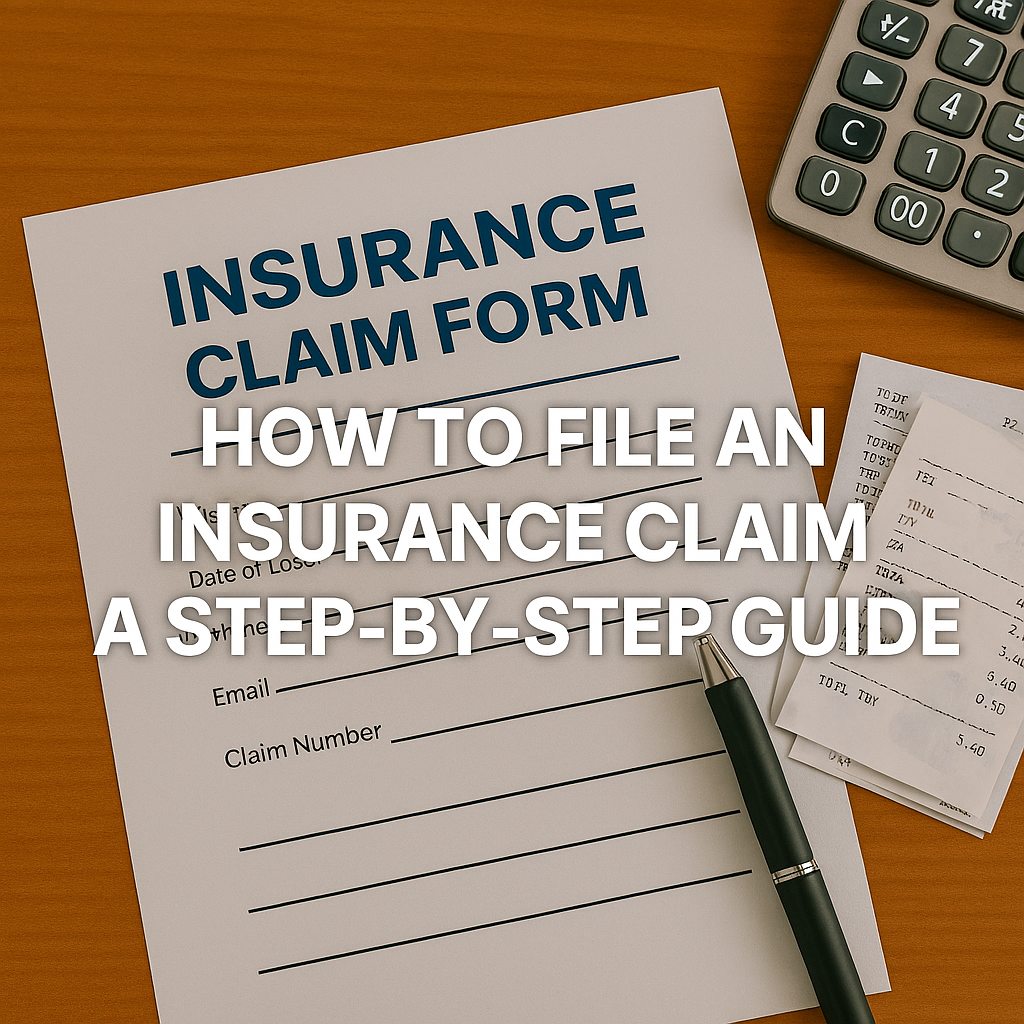Filing an insurance claim can feel intimidating, especially when you’re already dealing with loss, damage, or unexpected expenses. Whether it’s a car accident, a flooded home, a medical emergency, or a canceled trip, knowing how to file an insurance claim properly can make all the difference in getting reimbursed quickly and fairly.
This comprehensive guide walks you through the entire insurance claim process—from understanding your policy to receiving your settlement. Let’s break it down step-by-step.
Step 1: Understand Your Insurance Policy
Before filing a claim, review your insurance policy thoroughly. This includes:
- Coverage limits: Know what’s covered and what’s excluded.
- Deductibles: Understand how much you’ll pay out of pocket.
- Claim deadlines: Most insurers require prompt notification.
- Documentation requirements: Each type of insurance (auto, home, health, travel) has specific paperwork.
Knowing your policy helps you avoid surprises and ensures you meet all requirements.
Step 2: Document the Incident
Proper documentation is the backbone of a successful insurance claim. Immediately after the incident:
- Take photos and videos of the damage or injury.
- Record dates, times, and locations.
- Collect receipts, invoices, police reports, or medical records.
- Get witness statements if applicable.
This evidence supports your claim and speeds up the approval process.
Step 3: Notify Your Insurance Company
Contact your insurer as soon as possible. You can usually file a claim:
- Online via the insurer’s portal or mobile app
- By phone with a claims representative
- In person at a local office
Provide your policy number, a brief description of the incident, and any initial documentation. This step is known as the First Notice of Loss (FNOL).
Step 4: Complete the Claim Form
Your insurer will provide a claim form. Fill it out accurately and completely:
- Include all requested details
- Attach supporting documents
- Double-check for errors
Keep a copy of everything you submit. Incomplete or inaccurate forms can delay your claim.
Step 5: Work with the Insurance Adjuster
For property or auto claims, an insurance adjuster may inspect the damage. Be prepared to:
- Walk them through the incident
- Share your documentation
- Ask questions about the process
The adjuster will assess the damage and estimate the payout based on your policy.
Step 6: Get Repair or Treatment Estimates
Depending on the type of claim, you may need:
- Contractor quotes for home repairs
- Mechanic estimates for vehicle damage
- Medical bills for health claims
- Receipts and itineraries for travel claims
Submit these estimates to your insurer to support your claim amount.
Step 7: Track Your Claim Status
Stay organized by:
- Keeping a claim journal with dates and contacts
- Saving emails and call logs
- Following up regularly
Most insurers offer online tracking tools. Use them to monitor progress and respond to requests quickly.
Step 8: Review the Settlement Offer
Once your insurer processes the claim, they’ll issue a settlement offer. Review it carefully:
- Check for correct deductible application
- Confirm coverage limits were honored
- Compare with your estimates and receipts
If the offer seems low, you can negotiate or appeal.
Step 9: Finalize Repairs or Payments
After accepting the settlement:
- Hire reputable contractors or service providers
- Confirm payment arrangements
- Keep receipts and warranties
For health claims, ensure providers are paid and your records are updated.
Step 10: Appeal if Necessary
If your claim is denied or underpaid:
- Request a written explanation
- Submit a formal appeal with supporting evidence
- Consider mediation or contacting your state’s insurance department
Persistence and documentation are key to overturning a denial.
Common Types of Insurance Claims
| Type | Common Claims | Key Documents |
| Auto Insurance | Accidents, theft, vandalism | Police report, photos, repair estimates |
| Home Insurance | Fire, water damage, theft | Inventory list, receipts, contractor quotes |
| Health Insurance | Surgery, hospitalization, prescriptions | Itemized bills, EOBs, referrals |
| Travel Insurance | Trip cancellation, lost luggage, medical emergencies | Itineraries, receipts, medical records |
Mistakes to Avoid When Filing a Claim
- Waiting too long to report the incident
- Failing to document damage or loss
- Submitting incomplete forms
- Ignoring deadlines
- Accepting the first offer without review
- Not understanding your policy terms
Avoiding these mistakes can save you time, money, and frustration.

